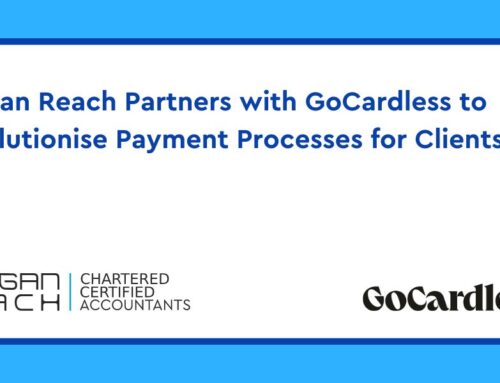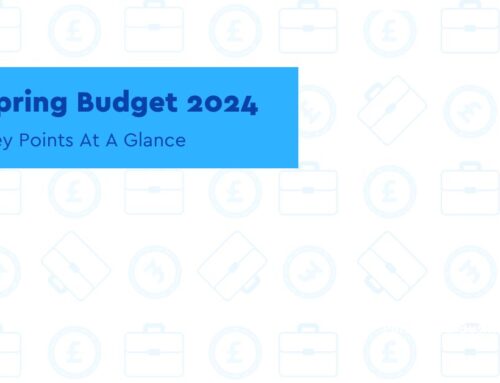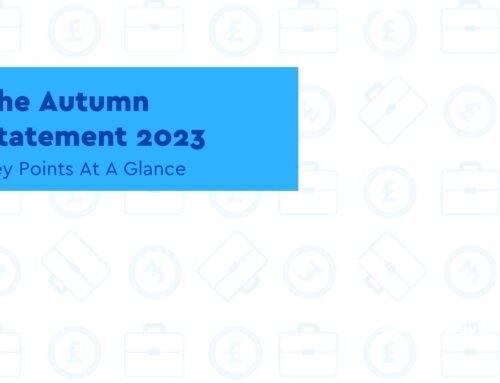Changes to Coronavirus Job Retention Scheme from July 2021
Key Points
- Employers will need to pay the 10% difference along with employee tax and NICs to HMRC
- You are able to claim before, during or after you process your Payroll
In July 2021, CJRS grants will cover 70% of employees’ usual wages for the hours not worked, up to a cap of £2,187.50. In August 2021 and September 2021, this will then reduce to 60% of employees’ usual wages up to a cap of £1,875.
Employers will need to pay the 10% difference in July 2021 (20% in August 2021 and September 2021), so that they can continue to pay their furloughed employees at least 80% of their usual wages for the hours they do not work during this time, up to a cap of £2,500 per month.
Employers can continue to choose to top up employees’ wages above the 80% total and £2,500 cap for the hours not worked at their own expense.
You are able to claim before, during or after you process your Payroll. If you can, it’s best to make a claim once you are sure of the exact number of hours your employees worked, so you don’t have to amend your claim later.
Conditions of claiming CJRS
You must pay the employee tax and National Insurance contributions to HMRC. This is a condition of claiming the grant, not doing so will incur a repayment of the whole CJRS grant and you may not be able to claim any future CJRS grants.
Flexibly furloughing employees
You can also use the CJRS flexibly by bringing employees back to work some of their usual hours. Be mindful that you can only claim a portion of your employee’s usual wage costs – for the hours spent on furlough only.
As a reminder, HMRC say they will be carrying out future compliance checks to identify error and fraud in claims (namely those that claim for hours actually worked) – so be careful how you claim.
For guidance on how to calculate the amount you should claim for an employee who is flexibly furloughed during June and July 2021, click here.
Taxable benefit charge – returning office equipment
Key Points
- Supplying employees with office equipment without a transfer of ownership means there is no tax charge upon return
- If employees purchase their own home-working equipment and are reimbursed, there is no benefit charge
HMRC’s latest bulletin highlights guidance on the tax implications of providing office equipment to employees and reimbursing employees for office equipment they have bought to work from home.
Employer provided equipment
If you have supplied your employees with office equipment to allow them to work from home, without a transfer of ownership, there is no tax charge when they return the equipment back to you.
If you transfer the ownership of the equipment to the employee at any stage of their employment, a benefit charge generally arises on the market value of the equipment at the time of the transfer less any amount made good by the employee.
Employer reimbursed equipment
If your employee has agreed to purchase their own home office equipment for use whilst working at home as a result of coronavirus and you reimburse the exact expense, unless you have specified to your employee that they must transfer ownership to you, the ownership of the equipment rests with your employee.
There is no benefit charge on the reimbursement. There is also no benefit charge if you allow your employee to keep the equipment as it is something that they already own.
Further information and to check which expenses are taxable if your employee works from home due to coronavirus is available.
Changes to VAT from July 2021
Key Points
- The Import One Stop Shop will be introduced to reduce the administrative burden on businesses
- Traders will only have to deal with one administration, in one language, even if sales are EU-wide
Following the end of the Transition Period on December 31, 2020, fundamental changes are to come into effect from July 1, 2021 regarding the collection of VAT.
The changes will apply to the sale of both services and goods to the EU. To support UK traders, HMRC will introduce a new VAT e-commerce IT system to link with the new EU-wide IT systems.
From July 1, 2021, the £22 low consignment exemption will be scrapped. All EU imports will then be subject to VAT in the relevant country of import. However, for consignments with a total aggregate value of less than €150, the VAT will be charged at the point of sale, rather than at the point of arrival in the customer country.
The optional Import One Stop Shop (IOSS) greatly simplifies VAT procedures by allowing non-EU online sellers (this now includes sellers based in Great Britain post-Brexit) to register for VAT in one EU member state, collect VAT from all their EU sales and report on a single monthly IOSS VAT return. This means no more multiple VAT filings in multiple countries.
A UK business registering for the IOSS will receive a unique number that must be quoted on all shipments to the EU.
If your consignment is valued at £135 or more, then current rules continue to apply (i.e. Import VAT is due). Until the system is fully implemented businesses can register in any EU Member State.
Further guidance regarding the UK IOSS registration portal will be made available in due course.
UK economy back to pre-covid level by end of year
Key Points
- UK GDP is set to bounce back to its pre-Covid level towards the end of 2021
- CBI recommends a ‘Learning for Life’ guarantee, which would unlock trapped levy money for employers
Despite the delay on the lifting of all lockdown restrictions for another month, the UK economy is still set for a breakthrough year, according to the latest Confederation of British Industry (CBI) Economic Forecast.
The easing of many Covid-19 restrictions in line with the UK government roadmap, rapid roll-out of vaccines and the unleashing of pent-up demand means that the UK economy is poised for considerable economic growth over the summer. But this won’t be felt as strongly by those sectors still working under restrictions. More broadly, stagnant productivity and business investment remain a drag on the longer-term sustainability of economic growth.
UK GDP is set to bounce back to its pre-Covid level towards the end of 2021, a year earlier than the previous CBI forecast (in December 2020) expected.
The CBI is forecasting GDP growth of 8.2% this year, and 6.1% in 2022 (revised up from 6.0% and 5.2% in our previous forecast), following a historically large (-9.9%) fall in output over 2020.
Household spending is the linchpin of this recovery, driving just over a quarter of GDP growth in 2021, and 70% of growth in 2022. Consumer spending is bolstered by an improvement in real incomes, and households running down some of the excess savings built up over the last year.
The CBI now also expects a much lower peak in the unemployment rate (5.5% in Q3) than in December (7.3% in Q2 2021). This is in part due to the extension of the Job Retention Scheme into the autumn, the resilience of the labour market so far, and expectations of a much stronger economic recovery.
A temporary boost to government spending on tackling the virus is another significant contributor to growth this year, driving around half of the rise in GDP over 2021.
Business investment is also set to claw back some of its losses, spurred on by strong economic growth and rising confidence, reinforced by the super-deduction announced in March’s Budget. Business investment nonetheless remains 5% below its pre-Covid level at the end of 2022, reflecting both the scale of the decline seen over the crisis, and lingering uncertainty over the longer-term impact of Covid-19 on business models.
CBI director-general, Tony Danker, said: “There are really positive signs about the economic recovery ahead this year and next. The data clearly indicates that there is pent up demand and ambition across many sectors.
“The imperative now must be to seize the moment to channel this investment into the big drivers of long-term UK prosperity. That’s why it’s the right time for government to come forward with far more detailed plans on everything from decarbonisation, to innovation to levelling up.
“Clearly this does not apply to the hardest hit sectors from the pandemic who even now face continued delays and genuine challenges to stay viable. Extending the commercial rent moratorium will help keep some firms’ heads above water, but the government must also do the same on business rates relief.
“It would be devastating for hospitality, events or aviation businesses to fail on what we hope is the last leg of restrictions.”
Key forecast data
Jobs and household spending
- Household spending is set to increase by 6% in 2021 and 7% 2022 as real incomes recover, and unemployment falls back from its peak in Q3 2021
- Employment is set to recover from the second half of the year onwards, leading to a lower and later peak in unemployment than we had previously expected. By the end of 2022, the level of employment will be slightly above its pre-Covid level (by 1.3%).
- The unemployment rate is expected to peak at 5.5% in Q3 2021. The unemployment rate will fall back thereafter, ending 2022 at 4.2% – historically low, but still a little above its pre-Covid level (of just under 4%)
- Real household incomes rebound in 2022 particularly (rising by 3.1%), as the economic and labour market recovery gain a firmer footing.
Long-term outlook
- Whilst business investment will recover, it nevertheless remains 5% below its pre-Covid level at the end of 2022
- Weak productivity also continues to mark the recovery. While output per worker recovers its losses over the forecast, it only returns to its (already weak) post-2010 trend over the next year.
Global outlook
- A recovery in global trade drives UK exports growth in our forecast, which grow by 2.1% in 2021 and 10% in 2022. The recovery is particularly pronounced in global goods trade, likely reflecting strong growth in large economies such as China and the US. However, global services trade is likely to lag behind by comparison – reflecting a more sluggish recovery in areas such as tourism and aviation.
- We expect stronger global GDP growth (6.3% in 2021, 4.9% in 2022 in purchasing power parity terms) than in our last forecast (5.6% and 4.3%), thanks partly to better health outcomes and fiscal stimulus in the US, which fuel consumer spending and business investment
- However, there is some divergence in the global recovery: we expect a weaker near-term outlook in the Eurozone, and many emerging markets are also likely to lag behind, due to variable progress in tackling the pandemic so far.
- Alpesh Paleja, CBI lead economist, said: “Successful rollout of Covid vaccines and an improvement in health outcomes means we are set for a bounce in growth over the summer. However, this won’t feel like a recovery to some, the aviation and events industries in particular will take much longer to recoup their losses.“Other long-term challenges are also emerging: recruitment difficulties are adding to global supply bottlenecks, which are in turn stoking pricing pressures. While these should subside as activity around the world normalises, it’s one to keep an eye on.“As we move from crisis to recovery, it’s important to present a vision for what a post-Covid economy should look like. Maintaining the strength in innovation and tech adoption during the pandemic, and facilitating the adjustment of firms to new ways of working, are only the first steps in tackling the UK’s burdensome legacy of weak productivity.”The recovery from the pandemic provides the ideal springboard to tackle the structural issues weighing on the economy prior to the Covid-19 pandemic. To achieve this, the CBI has identified six ways to transform the economy after the pandemic, to realise a decade of better economic and social progress. Some of the CBI recommendations include:
- Deliver record levels of investment for innovation, setting out the spending profile on R&D to reach £22bn by 2024/25 in this year’s Spending Review.
- Reform VAT rules for company cars and public charging to accelerate take-up of zero emission vehicles.
- Replacing the Apprenticeship Levy with a ‘Learning for Life’ guarantee, which would unlock trapped levy money for employers to spend more on training.
- Create a new Strategic Dialogue on Funding our Future, co-chaired by HM Treasury, the Bank of England and the CBI, to bring together the whole value chain – from hungry investees to private investors. This will add the customer viewpoint to the Bank’s productive finance workstream and shape proposals to unlock more pension funds, patient capital and private sector finance, fostering a cultural change to power growth.
- Create globally leading clusters in our regions and nations – commission the CBI to develop coalitions that can scale up economic clusters around the country, and write the playbook for how to build distinctive regional and national comparative advantage.
Weekly HMRC, Gov’t and tax updates
Use the right payment reference when paying Class 1A National Insurance contributions
Electronic payment for National Insurance contributions declared on your P11D(b) return for the tax year ended April 5, 2021 must clear into the HMRC account by July 22, 2021.
Help ensure your payment is correctly allocated by providing the correct payment reference. Use your 13-character Accounts Office reference followed by 2113.
Adding 2113 is important because 21 tells HMRC the payment is for the tax year ended April 5, 2021, and 13 lets HMRC know the payment is for Class 1A National Insurance contributions. The reference should have no gaps between the characters.
Go to pay employers’ Class 1A National Insurance and click the green ‘Pay Now’ button to select one of the secure payment methods or for more information on how to pay your Class 1A National Insurance contributions.
Business rates holiday to begin transitional period
The Covid 1 year business rates holiday ends on June 30, 2021. While other Covid support measures will continue until September, the holiday will go through a transitional period from July until the end of March 2022 when businesses will get 66% relief.
If your business was legally allowed to open during the national lockdown starting January 5, 2021, your discount for July 1, 2021 to March 31, 2022 will be capped at £105,000 rather than £2 million. You can get the retail discount on top of any other business rates relief you’re eligible for. If you opt out of the retail discount for the 2021 to 2022 tax year you cannot change your mind.
Flexible rail tickets launched for hybrid-working commuters
Flexible rail season tickets aimed at commuters who will, as the Covid lockdown eases, only travel into work for two or three days a week were launched on Monday (21 June).
Supplied by National Rail, the tickets will allow unlimited travel between two stations on any eight days in a 28-day period. They are designed to offer savings to part-time commuters travelling during peak hours for part of the week. Commuters can use them from 28 June.
With no need to select the days of travel in advance, the flexible season tickets allow passengers a guarantee that they can alter their bookings with no extra charge if their plans change. There will also be an online season ticket calculator to help commuters find the cheapest options.
‘Freedom day’: What the four-week delay means for employers
This week’s postponement of lifting all coronavirus restrictions – from 21 June to 19 July – has thrown many businesses into confusion after they had prepared to bring employees back into the office once the requirement to ‘work from home if you can’ was lifted.
Here are four key questions answered for employers
Get In Touch
At Morgan Reach, we understand every business needs a little help now and again-especially when it comes to the financial side of things. Therefore, to help our clients and visitors we endeavour to cover as much of the business news as possible. If you are self-employed or run a business and need assistance and advice on how these news could make a difference to you or your business, feel free to get in touch with the experts at Morgan Reach. Our business growth experts at Morgan Reach will guide you through what support is available for you or your business as well as the latest news that may affect you.







